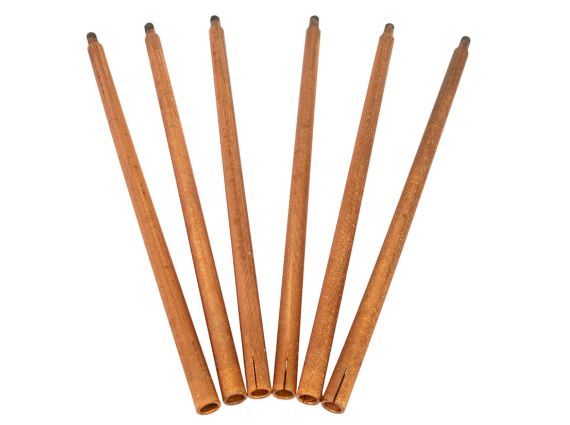What is the effect of carbon rod tip shape (pointed/flat) on arc stability and gouging quality?
The tip shape of the carbon rod has a significant impact on the arc stability and gouging quality, as follows:
Influence on arc stability
Pointed carbon rod: The tip area of the pointed carbon rod is smaller, which makes it easier to gather charges and form a stable arc when striking the arc. Because the electric field strength at the tip is relatively high, electrons are more likely to be emitted, so that the arc is quickly established. During the gouging process, the arc of the pointed carbon rod is relatively concentrated and not prone to drift. This is because the shape of the tip makes the arc path relatively fixed, which is less affected by external interference (such as airflow, magnetic field, etc.), and can maintain a relatively stable combustion state.
Flat-headed carbon rod: The tip area of the flat-headed carbon rod is larger. When striking the arc, higher voltage and current are required to overcome the larger contact area, so that the charges gather and form an arc, so it is relatively difficult to strike the arc. During the gouging process, because the arc of the flat-headed carbon rod is distributed on a larger plane, its stability is relatively poor. External factors such as the unevenness of compressed air and the uneven surface of the workpiece can easily cause the arc to deviate or swing, resulting in arc instability.
Impact on the quality of gouging
Pointed carbon rod: Since the arc is concentrated in the tip, the heat is also concentrated in a smaller area, so the width of the gouging is relatively narrow and the depth is relatively deep. This makes the shape of the gouging more regular and the edges neat. At the same time, the concentrated arc energy can melt the metal more effectively, reduce the carbon inclusion phenomenon during the gouging process, and improve the quality of the gouging. However, when using a pointed carbon rod, if the operation is improper, the bottom of the gouging may be overheated or even cracked due to excessive heat concentration.
Flat-headed carbon rod: The arc of the flat-headed carbon rod is distributed on a larger plane, and the heat is relatively dispersed, so the width of the gouging is larger and the depth is relatively shallow. This heat distribution method makes the bottom of the gouging relatively flat, and it is not easy to have defects such as overheating and cracks. However, due to the dispersion of arc energy, it may not be sufficient when melting the metal, and it is easy to produce some unmelted metal particles at the edge of the gouging, and additional cleaning work is required to ensure the quality of the gouging.
In practical applications, it is necessary to select a suitable carbon rod tip shape according to the specific gouging process requirements and workpiece characteristics. If you need to process narrow and deep grooves and have high requirements for arc stability, a pointed carbon rod is a better choice; if you need to process wide and shallow grooves and want the bottom of the groove to be flat, a flat-headed carbon rod may be more suitable.

Contact: admin
Phone: +86-13665233012
E-mail: service@weldmaterial.com
Add: Huanghua Industrial park, Jiangdu City, Yangzhou , Jiangsu Provicne, China.